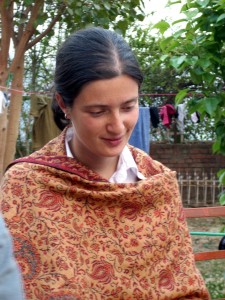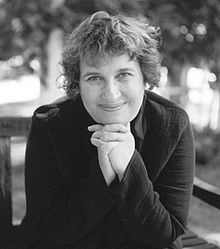Hoping to Heal, Accepting Death
When do you hope to be healed, and when do you accept to die?
This is a critical question for many faced with terminal or life-threatening diseases. From the moment of diagnosis, people are very raw and vulnerable. With some illnesses (such as cancer) people feel at times that they might live, and at times they might die, and they go through a roller coaster of hope and fear.
Within such an environment of the mind, coming to terms with the possibility of one’s death can seem like a kind of resignation, and counter-productive to one’s process of healing. But as Sogyal Rinpoche explains in this teaching: “Accepting and preparing for death does not necessarily mean giving up on life.”
Also, as it says in Chapter 3 of The Tibetan Book of Living and Dying:
[W]hen we accept death, transform our attitude toward life, and discover the fundamental connection between life and death, a dramatic possibility for healing can occur.
Tibetan Buddhists believe that illnesses like cancer can be a warning, to remind us that we have been neglecting deep aspects of our being, such as our spiritual needs. If we take this warning seriously and change fundamentally the direction of our lives, there is a very real hope for healing not only our body, but our whole being.
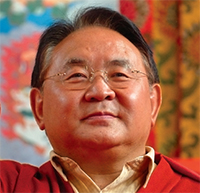 In this teaching Rinpoche also mentions the practice of Essential Phowa from Chapter 13, which is “as much a healing practice for the living as a practice for the moment of death”. You can find more teachings on the Essential Practice of Phowa here and here.
In this teaching Rinpoche also mentions the practice of Essential Phowa from Chapter 13, which is “as much a healing practice for the living as a practice for the moment of death”. You can find more teachings on the Essential Practice of Phowa here and here.
Meeting my Teacher and his Book of Wisdom
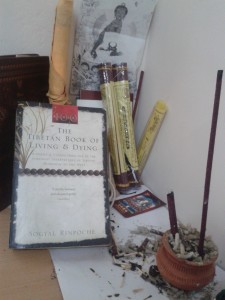 Tshewang Yeden from Bhutan writes: “One of my friends once received a prize for her participation in an event. All of my friends, including myself, were excited to see what was really in the small rectangular gift bag. When she opened it, she was surprised to see a Buddhist book, Read More
Tshewang Yeden from Bhutan writes: “One of my friends once received a prize for her participation in an event. All of my friends, including myself, were excited to see what was really in the small rectangular gift bag. When she opened it, she was surprised to see a Buddhist book, Read More
Memories of Jamyang Khyentse Chökyi Lodrö, the Master of Masters
In the summer of 2009, on the occasion of the 50th anniversary of Jamyang Khyentse Chökyi Lodrö’s passing away, Sogyal Rinpoche gave this rare recounting of his memories of Jamyang Khyentse and his early life in Tibet.
As Rinpoche wrote in the Introduction to The Tibetan Book of Living and Dying:
Jamyang Khyentse is the ground of my life, and the inspiration of this book…Had I not met my master Jamyang Khyentse, I know I would have been an entirely different person. With his warmth and wisdom and compassion, he personified the sacred truth of the teachings and so made them practical and vibrant with life. Whenever I share that atmosphere of my master with others, they can sense the same profound feeling it aroused in me. What then did Jamyang Khyentse inspire in me? An unshakable confidence in the teachings, and a conviction in the central and dramatic importance of the master. Whatever understanding I have, I know I owe it to him. This is something I can never repay, but I can pass on to others.
This video is the second of a series on Remembering the Masters, featuring short teachings and stories about Sogyal Rinpoche’s masters. Further videos in this series will be presented over the coming weeks.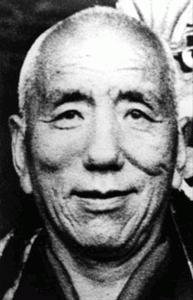
To see the first video in this series, please go here.
This is the Path to Follow!
Verena Pfeiffer from Germany writes: “When I read the Tibetan Book of Living and Dying for the first time, I was quite young and knew absolutely nothing about Tibetan Buddhism. There were many points that I didn’t understand or didn’t know what to do with.
However, what opened my heart back then and moved me to tears and still does today – almost 8 years later – are the accounts of Sogyal Rinpoche’s encounters with death.
Lama Tseten and Samten, Ani Pelu and Ani Rilu have become personal friends and rolemodels to me. The stories of their passing are communicating such incredible wisdom and profound understanding, boundless love and deep compassion – they demonstrate the essence of what Sogyal Rinpoche is to me. Reading these accounts showed me the authenticity and perfect qualities of his lineage and made it intuitively clear to me that “this is it!”, this is the path to follow!”
What is your story about The Tibetan Book of Living and Dying? To share it, follow this link: Share your story.
Sharon Salzberg on The Tibetan Book of Living and Dying
Though my own parents died quite some time ago, I’ve been watching my friends face the loss of their parents. As a community, we have of course also been confronted by the deaths of siblings, friends, partners, children. As a community of practitioners, we have tried to translate the reality of change and loss into an awakened love and compassion.
The Tibetan Book of Living and Dying has been the go-to book for this process for almost everyone I know. A woman I met the other day told me she kept the book by her bedside for 5 months after her sister died. And all of us too, of course, will someday die, and all of us encounter change in every aspect of our lives. Remembering and incorporating this truth is to our great benefit in living, every single day. The Tibetan Book of Living and Dying has immensely served those not currently bereaved, those not facing an immediate terminal diagnosis as well.
I first heard of the book when I was in Paris in 1991, having left Russia because of the coup attempt against Gorbachev. A friend brought me to Sogyal Rinpoche’s center in Paris to meet a wonderful Tibetan lama Sogyal Rinpoche was devoted to, Nyoshul Khen Rinpoche. He was surrounded by a group of visiting schoolchildren, essentially playing with them. Sogyal Rinpoche graciously translated for us. It was an amazing day for me because I just loved Nyoshul Khen Rinpoche on the spot and he became my teacher.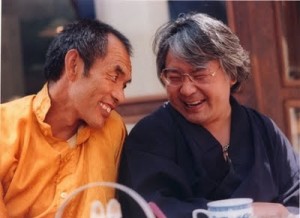
I also met Andrew Harvey, who was stretched out on a floor with hundreds of pages of the manuscript strewn all around him as he edited. Remember what cutting and pasting meant in those days? He described what he was working on, and I said I’d look for it. It was an auspicious day all around.
One of America’s leading spiritual teachers and authors, Sharon Salzberg is cofounder of the Insight Meditation Society (IMS) in Barre, Massachusetts. She has played a crucial role in bringing Asian meditation practices to the West. The ancient Buddhist practices of vipassana (mindfulness) and metta (lovingkindness) are the foundations of her work.
What is your story about The Tibetan Book of Living and Dying? To share it, follow this link: Share your story.
